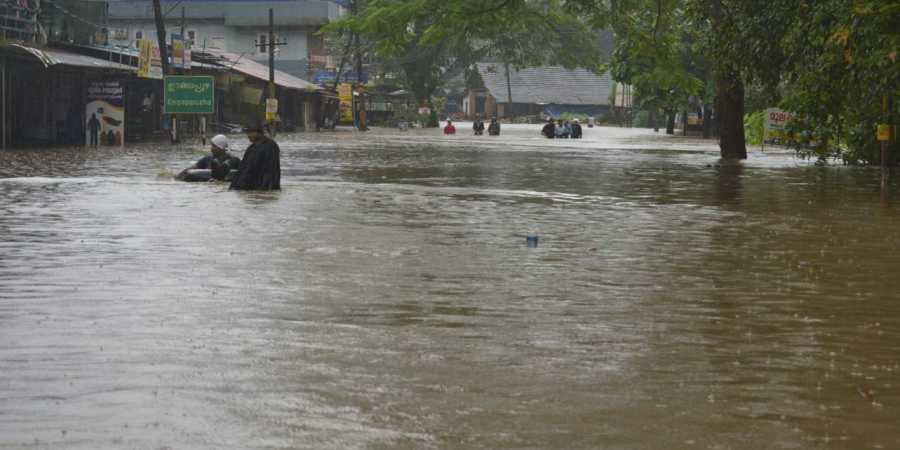Massive Überschwemmungen im Nahen Osten
Seit Tagen regnet es in Syrien, dem Irak und vor allem Iran. In der Provinz Idlib in Norwestsyrien stehen Flüchtlingslager unter Wasser, im Nordirak sind inzwischen Straßen gesperrt und fällt der Schulunterricht aus, aber ganz besonders schlimm hat es die Menschen im Iran erwischt, mehrere Dutzend sind inzwischen umgekommen, tausende haben ihre Häuser verloren:
Twenty-five of Iran’s thirty-one provinces are now affected by massive flooding that has plunged cities into crises and caused the military to respond. It took a week for Tehran to come to grips with the crises which has now been declared a national emergency.

(Bild: Überschwemmung im Iran, Quelle: New Indian Express)
Khuzestan province now faces a new deluge of rain, local reports indicate. 55 villages have been evacuated. This is after provinces in the north were critiqued for not planning ahead. Dozens are dead across Iran and flooding continues in the north and Western areas of the country. It is thought that it may take another week to subside. Major General Mohammad Ali Jafari, the Iranian commander-in-chief of the Iranian Revolutionary Guard Corps (IRGC), visited flood ravaged areas. The IRGC has now been deployed to help people during the floods, a shift from the usual role of the IRGC. In the past the IRGC has been spotlighted for its role in fighting in Syria. Now it is focusing on the homeland.
Lange Zeit versuchten iranische Medien das Ausmaß der Katastrophe herunterzuspielen, das staatliche Krisenmanagement war bislang katastrophal. Auch werden immer mehr Stimmen laut, die die massiven Überschwemmungen mit dem systematischen Raubbau an Natur in der Region in Verbindung bringen. Der letzte Sommer war extrem heiß, nun folgt, für die Jahreszeit eigentlich unünlicher, heftiger Dauerregen.
So erklärte der in einer iranischen Todeszelle sitzende Wissenschaftler Ahmad Reza Jalali, "that the reasons for massive floods during the past week in Iran included the destruction of natural plant coverage, obstruction of flood outlets as the case of flash flood in Shiraz and converting flood routes and dry river beds to residential areas."
Derweil spekuliert man im Irak, ob der völlige marode Mosul Damm den Wassermassen standhalten wird. Seit Jahren warnen internationale und irakische Experten, dass die Dammmauer unterspült sei und das ganze Ding jederzeit brechen könnte.